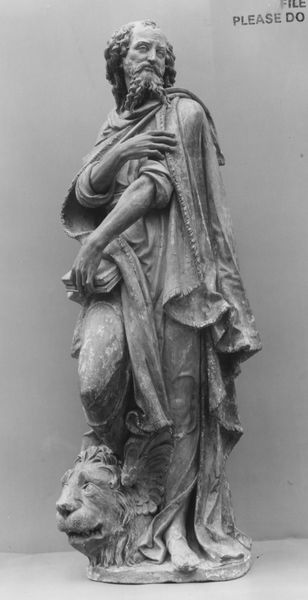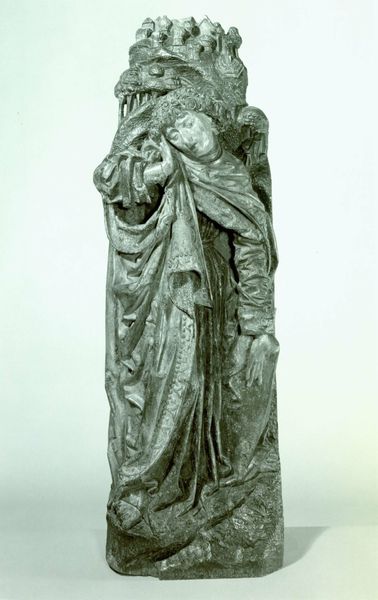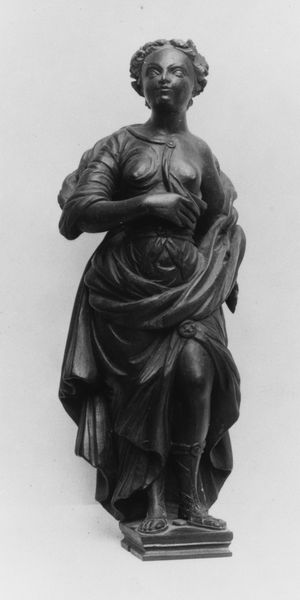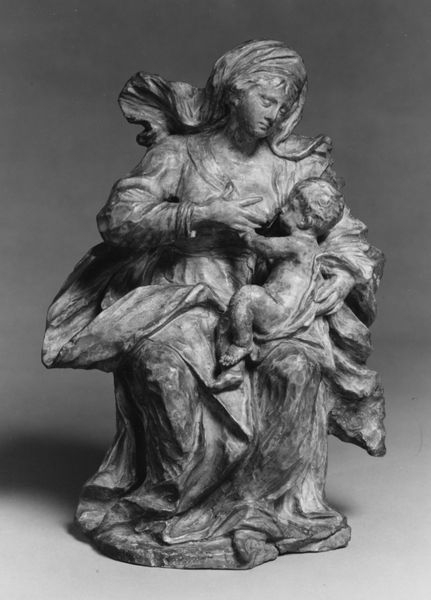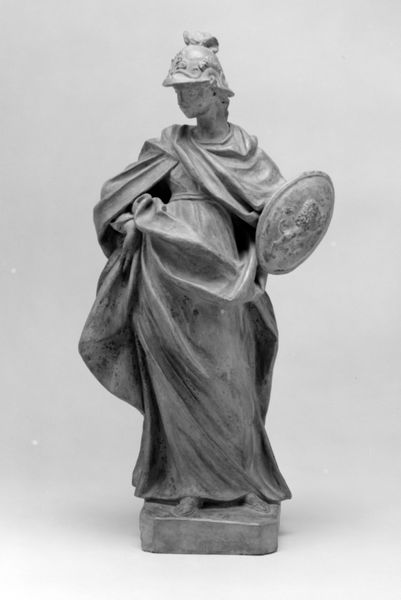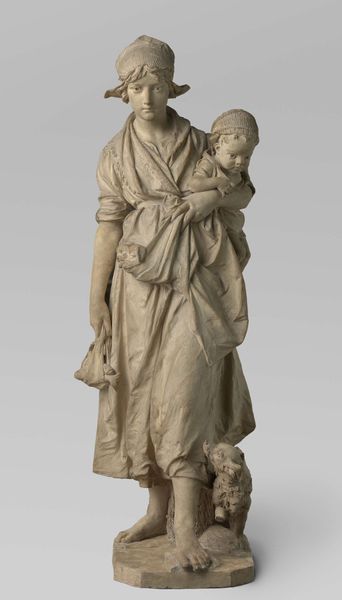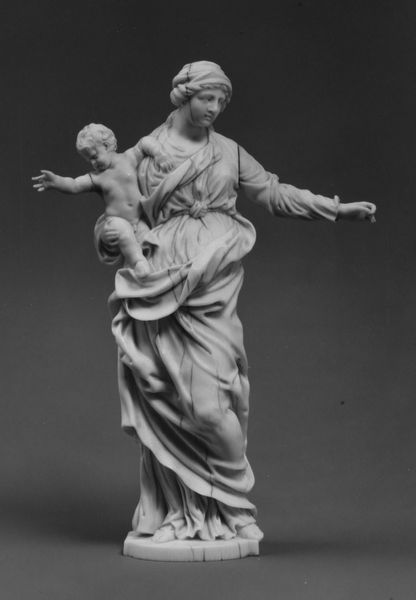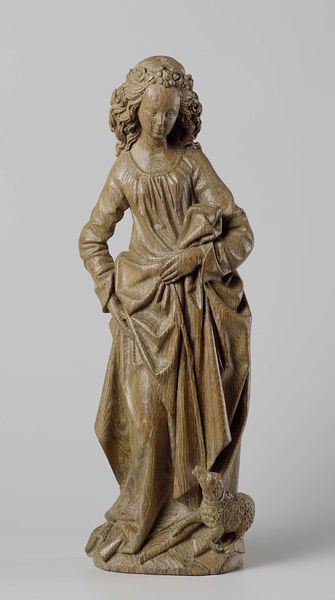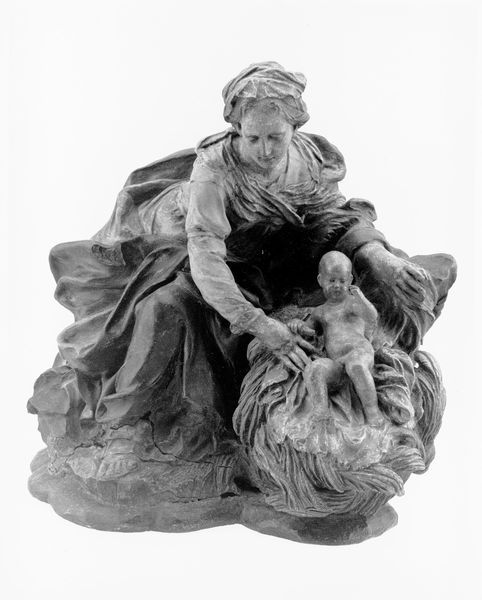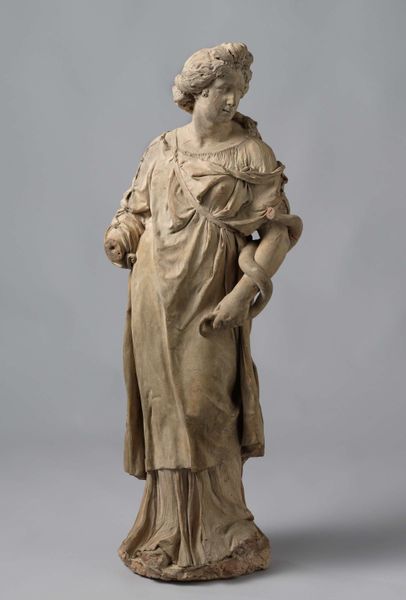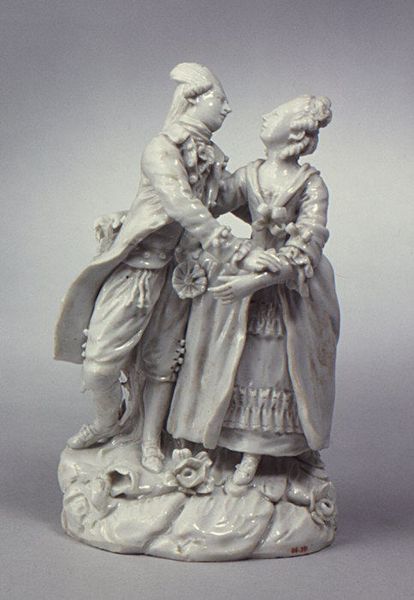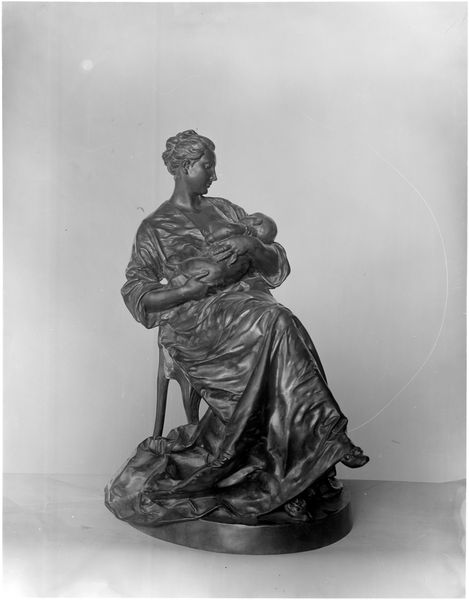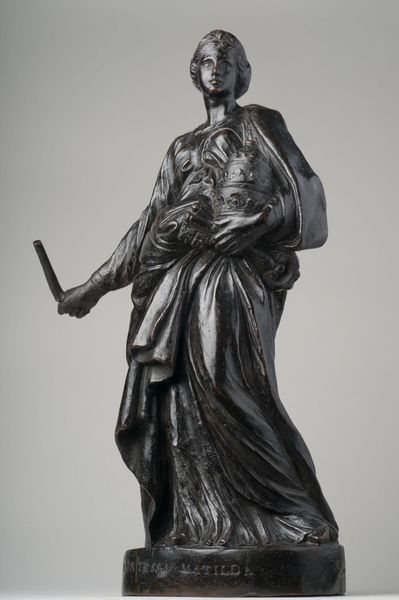
sculpture, marble
#
portrait
#
baroque
#
sculpture
#
figuration
#
madonna
#
child
#
sculpture
#
decorative-art
#
marble
#
italian-renaissance
Dimensions: Height: 22 in. (55.9 cm)
Copyright: Public Domain
Curator: Standing before us is the "Madonna and Child," a marble sculpture created by Giovanni Maria Morlaiter sometime between 1730 and 1765. It’s a wonderful example of Baroque sculpture currently residing at the Metropolitan Museum of Art. Editor: My immediate response is one of maternal serenity, though I can't help but think of the politics of such displays. The tender realism with which Mary's gaze is captured juxtaposes with the socio-political realities of motherhood then, especially in shaping ideals for female citizenry and the home. Curator: Exactly! We must recognize how idealized depictions such as this served very real political purposes, constructing particular roles for women in society, and often suppressing the diversity of experience. Yet the patronage behind religious sculptures had also the aim of public devotion through very accessible representations. Editor: Absolutely. Religious art in public spaces then functioned not simply as worship but indoctrination, a physical manifestation of dominant power structures meant to shape viewers’ consciousness of family and self in line with ecclesiastical teachings. Think of it in intersection with issues like gender inequality and hegemonic norms. The Church had much power on this sphere. Curator: That is true. It also emphasizes the ongoing discourse around sacred imagery within public institutions. Works of faith from the past spark conversations about shifting secular and social views today, and encourage new generations to develop a more acute eye in evaluating imagery that, for centuries, used to function in guiding behaviors and actions of whole populations. Editor: Precisely. Recognizing the multifaceted purpose allows us to not just view it as an aesthetic expression but as a product and reflection of the ideological landscapes it once inhabited. It helps decode art’s implicit commentary on historical gender dynamics. Curator: These layers make exploring older works so rich; this 'Madonna and Child', for example, prompts us to acknowledge the complex intersections of devotion, cultural control, artistic aspiration, and, fundamentally, historical influence. Editor: I agree; it’s these nuances that help unlock richer and deeper appreciations. The piece serves as an important lens through which to study historical attitudes about not just art, but also of societal order.
Comments
No comments
Be the first to comment and join the conversation on the ultimate creative platform.
